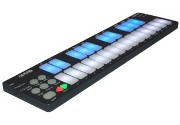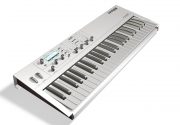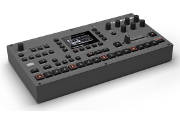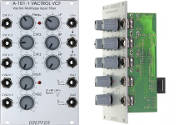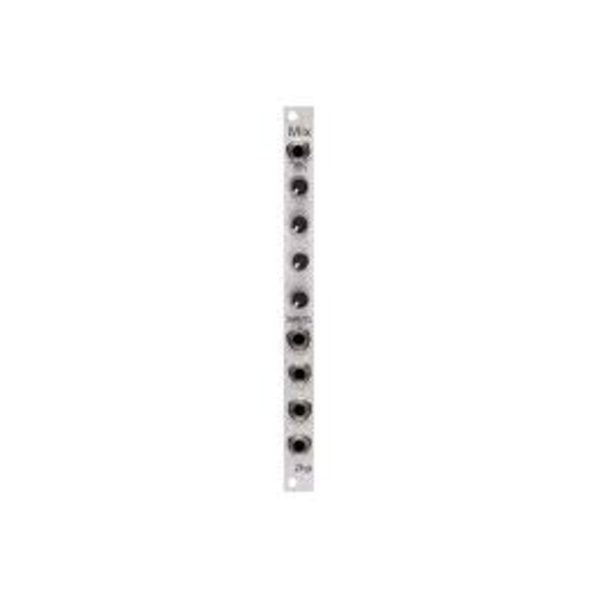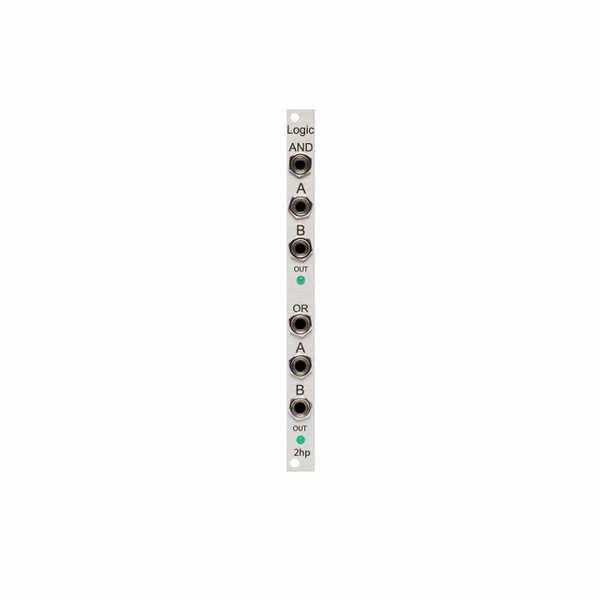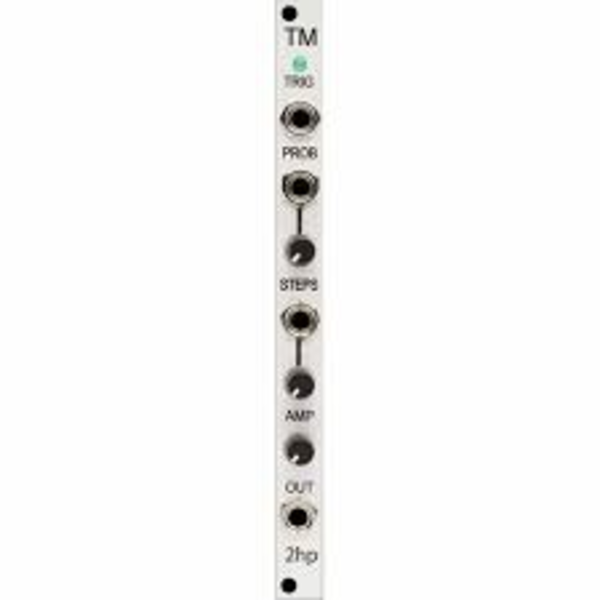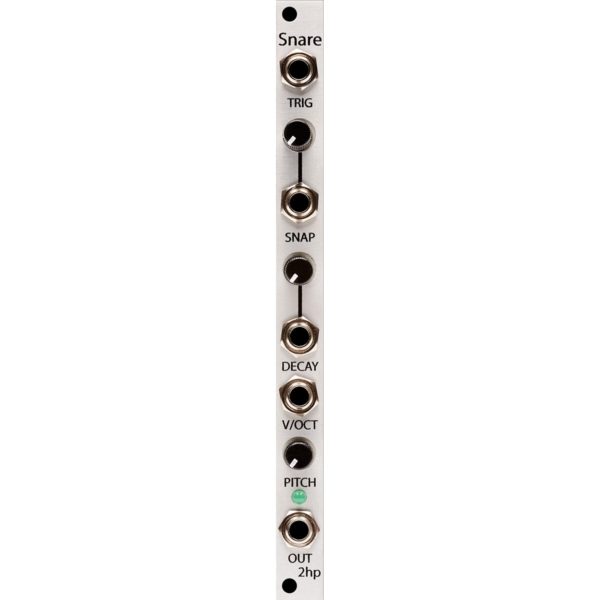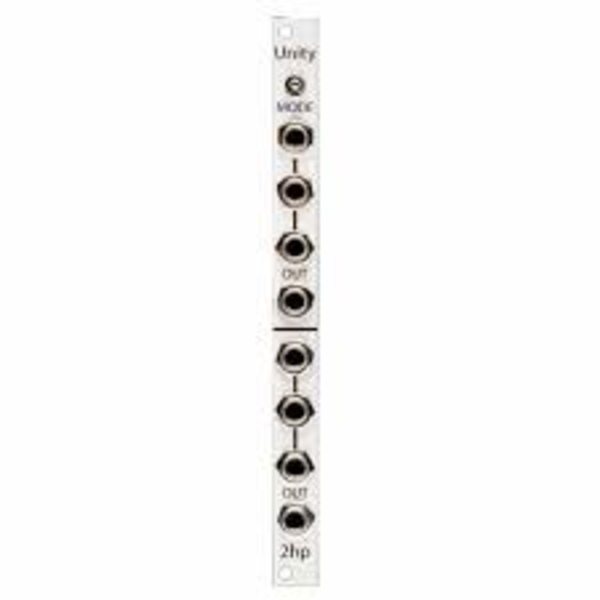uO_C
The uO_C (Ornament & Crime) from After Later Audio is an incredibly versatile CV generator and processor.
249,00 € TTC
The uO_C (Ornament & Crime) from After Later Audio is an incredibly versatile CV generator and processor.
Cult DIY-module! Now also available in our store. The uO_C is a very versatile CV-processor and -generator. The developers, therefore, call it the “Polymorphic CV Generator”. The slick interface with its graphical display and context-sensitive rotary encoders and pushbuttons paired with a quite powerful microchip-based hardware allows for a huge variety of applications. We are particularly enthusiastic about the various (micro)tonal (chord)quantizers and arpeggiators. But how the uO_C will develop in the future is also “up to you”, because the firmware is open source and you can also participate!
The hardware of the uO_C is based on a Teensy 3.1/3.2 dev board and is therefore equipped with a 32bit ARM Cortex M4. The CV outputs are 16bit accurate. Therefore even the finest gradations, e.g. exotic scales, can be set very precisely. The CV inputs are 12bit accurate with an update rate of up to 16Khz! Additionally, there are four trigger inputs, which are activated above 2.5V. The total latency in the system from the arrival of a trigger to the output is 100µs. Altogether the uO_C works as a quantizer with an accuracy of less than 1cent (1/100th of a semitone) and a latency of 0.1ms. That’s pretty dang good!
Programs can be loaded quickly via the main menu. In general, all functions are very quickly accessible. Depending on the program the uO_C is an ASR, a chord generator, quadruple quantizer, wavetable LFO, envelope generator, sequencer, byte beat generator or (just) a reference voltage generator! And: The firmware will certainly be extended in the future and is constantly updated regarding feature-set and bugs. The uO_C is currently delivered with:
- CopierMaschine is an enhanced version of the original quantizing digital emulation of a four-stage analog shift register (ASR).
- Harrington 1200 provides basic neo-Riemannian Tonnetz transformations of triadic chords, triggered by the digital (gate/trigger) inputs.
- Automatonnetz combines Tonnetz transforms with a “vector” sequencer – it can be both a chord sequencer and a melody sequencer, but not of the usual kind.
- Quantermain is a quad pitch quantizer for external voltages, with editable scales; it can do clocked (trigger-driven) quantizing, or continuous quantizing, with a latency of under 100 microseconds; it also features quad Turing Machines, May-Verhulst logistic maps or byte beats as optional, semi-random, internally generated CV sources.
- Meta-Q is a dual-channel quantizer, similar to Quantermain, but also offering scale and note mask sequencing.
- Quadraturia is a wavetable quadrature LFO, based on the “Easter egg” in the Mutable Instruments Frames module.
- Low-rents is a dual Lorenz and Rössler (strange attractor) modulation generator, partially based on the “Easter egg” in the Mutable Instruments Streams module.
- Piqued is a quad voltage-controlled envelope generator, based on envelope generator code from the Mutable Instruments Peaks module, but extending it with voltage control, additional envelope types, including re-triggering (looping) envelopes, additional segment shapes, adjustable trigger delays, and a unique Euclidean “trigger filter” which turns the app into a Euclidean rhythm generator which can output envelopes, not just gate or trigger pulses.
- Sequins is a dual-channel step sequencer offering 4 “tracks” of up to 16 steps each; tracks can themselves be sequenced.
- Dialectic Ping Pong is a quad-bouncing ball envelope generator, based on a hidden mode of the Mutable Instruments Peaks module.
- Viznutcracker, sweet! is a quad “byte beat” equation generator, which can be used as an audio source to generate curious but often interesting 8-bit noises and tunes, or which can be clocked by an external source to produce “byte beat” control voltage sequences. “Byte beats” were first described in 2011 by viznut (aka Ville-Matias Heikkilä).
- Acid Curds is both a chord quantizer (sometimes called a “harmonic quantizer” for external pitch voltages) and a chord progression sequencer.
- References is a utility app that outputs specific reference voltages on each channel to help tune or calibrate VCOs and other modules. It also includes a high-precision frequency meter and note tuner, a high-precision BPM (beats per minute) tempo meter, and a closed-loop calibration mode.
This description is taken from the O_C website. We are (also) not sure if we understood everything of the above while reading it. However, we find this way of looking deep into music theory and mathematics absolutely wonderful and recommend: Just try, patch, and listen to the results!
The After Later Audio version comes with the Jakplugg PCB and the original firmware. It is easily possible to install the Hemisphere firmware which transforms the O_C completely.
| HE: | 3 |
| TE: | 8 |
| Power consumption +12V: | 85 |
| Power consumption -12V: | 10 |

